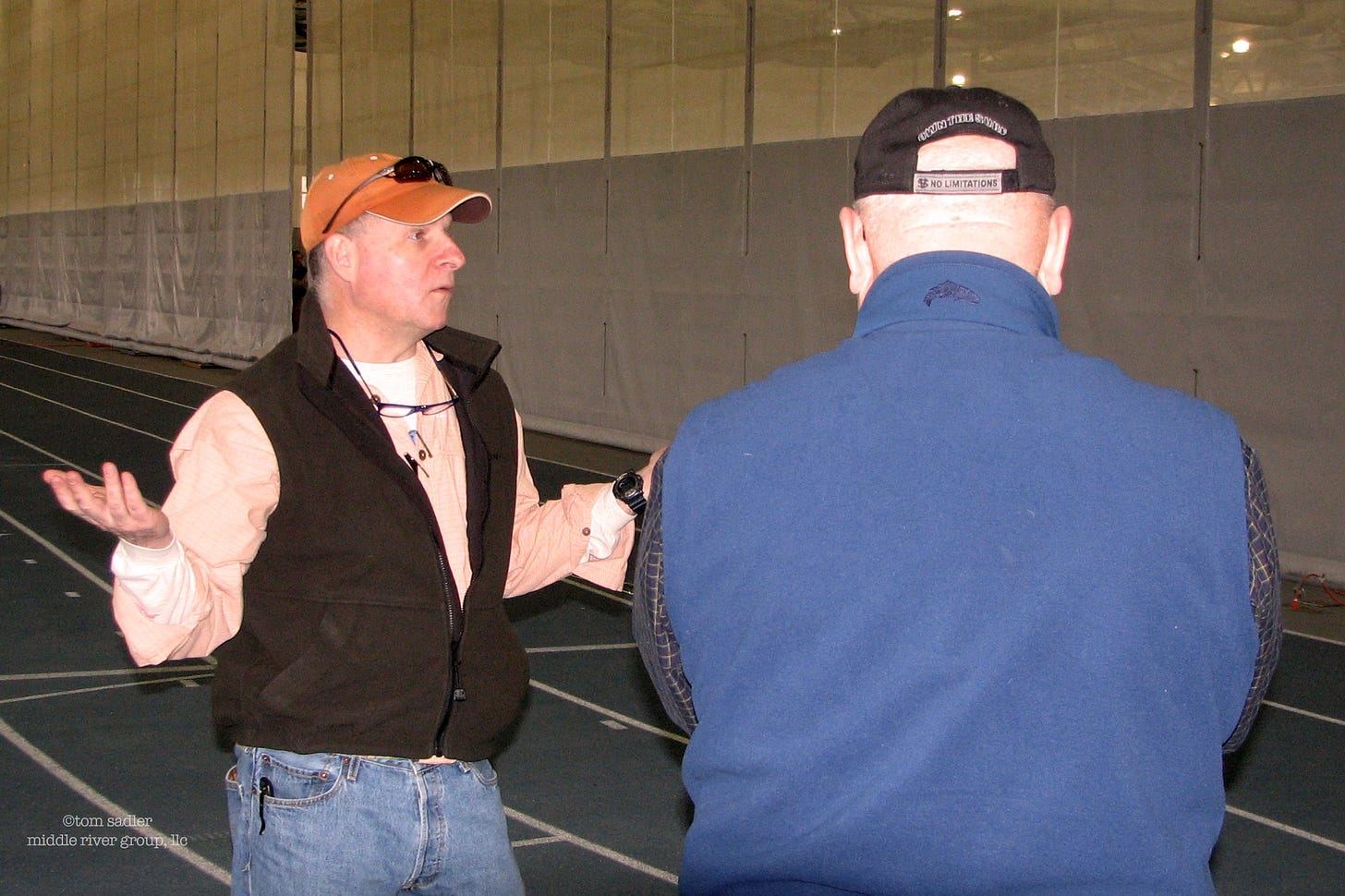Inspiration for this piece came from a Flylab article by John Juracek, “Killing the clock.” It got me thinking about how I introduce the two-stroke cast to beginners.
The following are the steps I use. If you don’t want to wade through my explanation, here are the key points:
Beginner casters usually take the fly rod too far back
To make the fly rod load you need to stop it in two places
Where you stop the rod is dictated by how much line you have to cast
Beginner casters usually take the fly rod too far back when learning to cast. It’s a natural thing to do. Heck, if they need to get the line behind them, it makes sense to bring the rod as far back as it takes to get the line back there.
My job as an instructor is explaining how the line, rod and caster work together. Before I show them what the cast should look like, I take a few minutes to explain that the fly rod is a flexible lever, designed to cast a flexible, weighted fly line.
I explain the rod should do most of the work rather than the caster. You paid good money for it—make it earn its keep. The rod needs to flex to make a good cast. It’s referred to as “loading.” Loading is what the rod is designed to do.1
The weighted fly line helps load the rod. The more line coming off the tip of the rod, the more weight is available to load the rod. Just waving the rod and line around isn’t going to be an efficient way to cast. Oh, it works—it just doesn’t work well, because the rod doesn’t flex effectively.
To make the fly rod load you need to stop it in two places. Once on the back cast and once on the forward cast.
On the back cast you hold the rod steady at the stop point allowing the line to straighten out going up and behind you.
On the forward cast you hold the rod steady at the stop point allowing the line to straighten out before landing on the water.
The distance between those two stops is the casting stoke length.
At some point, they likely heard the cast is made with the rod stopping at the 10 and 2 positions on a clock face. Well, as Lefty Kreh was known to say, “time ain’t got nothing to do with it.” And right he is.
As Juracek points out in his article, where you stop the rod and the length of your casting stroke is dictated by how much line you have to cast.
That’s might seem like a lot of explaining, but it lays the groundwork for executing a good cast. It gives me something to reference when I’m coaching them through the execution of their cast.
Now I’ll pick up a rod and show each step, repeating the pertinent point from the explanation.
If you are still reading at this point, permit me to offer some last advice. Seeing how it works is much better than reading about it. Get yourself a good instructor—it pays.
Rod action is a separate topic I’ll leave for another time.


